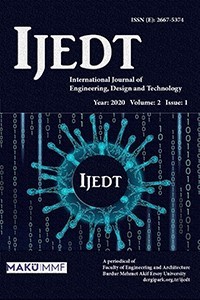Hurma Ağacının (Phoenix dactylifera L.) İklim ve Toprak İstekleri
Yeryüzünde tarım kültürünün ilk dönemlerinde kültürü yapılan bitki türlerinden biri olduğu için, antik ürün olarak ta anılan Hurma ağacı (Phoenix dactylifera L.), özellikle besin değeri yüksek önemli bir meyvedir. Meyvelerinin yüksek enerji deposu olması, 16 farklı aminoasit içermesi, lif, mineral, vitaminlerce zengin olması nedeniyle diğer besin kaynaklarına erişim veya olanaktan yoksun insanların hayatta kalması için önemli değere sahip besleyici bir meyvedir. Geçmişten bugüne, genel olarak tropik ve subtropikal alanlarda yaygın olarak yetişen önemli bir bitki olan Hurma ağacı kuraklığa toleranslı ancak çiçeklenme ve meyve verme döneminde bol suya ihtiyaç duyan, özellikle potasyum beslenmesine duyarlı toprak ve iklim istekleri açısından; kurak iklim, organik maddece zengin, 7.5 ila 8.5 arasında pH’ya sahip (bitki kullanımı için azot, fosfor ve potasyum mevcudiyetini sağlamak için toprak pH'sını ayarlamak için önlemler alınması gerekir), kumlu ya da killi kumlu, hatta killi toprakta bile yetişebilen, İdeal sıcaklık aralığı isteği, geceleri minimum 7°C, gündüz 32-38°C, olan bir bitkidir.
Anahtar Kelimeler:
Hurma, iklim ve toprak istekleri, İran
Climate and Soil Requirements of Date Palm (Phoenix dactylifera L.)
The date palm (Phoenix dactylifera L.) was one of the plant species that were cultured in the first period of the agricultural culture on earth. The date palm is an important fruit in nature. Because, the fruits content of high-energy, 16 different amino acids, fiber, minerals, vitamins need to contain, in other places according to sources or lack of median is important for survival at the moment is a nutritious fruit. In general, tropical and subtropical ones have been growing in recent times, which is an important product that grows in the pasture, but tolerant to drought-tolerant watering time and plenty of water to drink water, soil and climate requirements can be with potassium nutrient in the arid climate, rich in organic matter, at a pH of around 7.5 to 8.5 (measures are needed to adjust the soil pH to ensure the availability of nitrogen, phosphorus and potassium for plant utilization) sandy or sandy clay even clay soil. The ideal temperature range is at least 7C° at night, 32-38C° within days.
Keywords:
Date palm, climate and soil requirements, Iran,
___
- Arar, A. (1975). Soils, irrigation and drainage of the date palm. 3rd FAO Tech. Conf. on Imp. Date Produc., Proc. and Marktg., Paper No. A3.
- Cookson, P., Lepiece. A. (2001). Could date pulms ever disappear from the Batinah? Salination of a coastal plain in the Sultanate of Oman. In Water in the Arabian Peninsula; Problems and Policies (KA Mahdi (ed))
- Dowson V.H.W. (1982). Dowson Date Production and protection. Plant production and Protection Paper No; 35, FAO and Agriculture Organization of the United Nations. Rome, Italy
- Ghayoor, F. (2016). Diversity and nutritional properties of Pakistani dates: implications for sustainable value chain and decent living perspectives of rural households. Dissertation presented to the Faculty of Organic Agricultural Sciences Organic Plant Production and Agroecosystems Research in the Tropics and Subtropics (OPATS) University of Kassel
- Hillel, D. (2000). Salinity Management for Sustainable Irrigation: Integrating Science, Environment, and Economics. Washington, DC: World Bank Publications.
- Hobhouse, P. (2002). The Story of Gardening. Dorling Kindersley, London.
- FAO (2014). Food and agricultural commodities production for Pakistan for 2012. Food and Agriculture Organization of the United Nations. http://www.faostat.fao.org/DesktopDefault.aspx?PageID=339&lang=en&country=165
- Kaynakçı Elinç, Z., Kaya, L.G. (2018). Date Palm (Phoenix dactylifera L.) and Its Symbols in Turkish Culture in the Light of Mythology and Beliefs, Journal of Mehmet Akif Ersoy University Economics and Administrative Sciences Faculty, 5(2): 413-424.
- Malash, N.M., Flowers, T.J., Ragab, R. (2008). Effect of irrigation methods, management and salinity of irrigation water on tomato yield, soil moisture and salinity distrubition. Irrigation Science 26 (4) 313-323. DOI: 10.1007/s00271-007-0095-7
- Mason, S.C. (1925). Partial thermostasy of the growth centre of the date palm. J. Agric. Res. 31: 415-453.
- Munns, R., Tester, M. (2008). Mechanisms of salinity tolerance. Annu.Rev. Plant Biol. 59, 651-681.
- Nixon, R.W., Carpenter, J.B. (1978). Growing Dates in the US. US Department of Agriculture (USDA) Bulletin No.207, USDA, Washington. DC, USA.
- Pitman M.G., Lauchli, A.,(2002). Global impact of salinity and agricultural ecosystems, in; salinity environment- plants molecules, Kluwer, Netherlands; 3-20
- Rengasamy, P. (2006). Transient salinity and sobsoil const-raints to dryland farming in Australian sodic soils; an overview. Australian Journal of Experimental Agriculture.42, 351-361.
- Stanger G. (1985). Coastal salinization: a case history from Oman. Agric. Water Manage. 9, 269–286 10.1016/0378-3774(85)90038-1
- URL-1 (2018). https://www.gardenin-knowhow.com/edible/fruits/date/date-palm-treecare. htm?fbclid =IwAR1v-m1-_lCzmCvvhgk2vAhpzuCbFWdeOSzlLElG-TpZ04eoF8YLuyGv3Cs (Erişim Tarihi: 25.11.2018)
- URL-2 (2018). http://www.fao.org/docrep/006/y4360e/y4360e08.htm#TopOfPage (Erişim Tarihi: 25.11.2018)
- URL-3 (2018). http://www.fao.org/docrep/006/y4360e/y4360e0a.htm#TopOfPage (Erişim Tarihi: 25.11.2018)
- Wrigley, G. (1995). Date palm, Phoenix dactylifera. In: Smartt, J. and N. W. Simmonds (Eds.). Evolution of crop plants (2nd edition). Longman, London. pp. 399-403.
- Zaid, A. (2001). The world date production: a challenging case study. 2nd International conference on date palms, Al-Ain, United Arab Emirates. pp. 902-915.
- Başlangıç: 2018
- Yayıncı: Burdur Mehmet Akif Ersoy Üniversitesi
